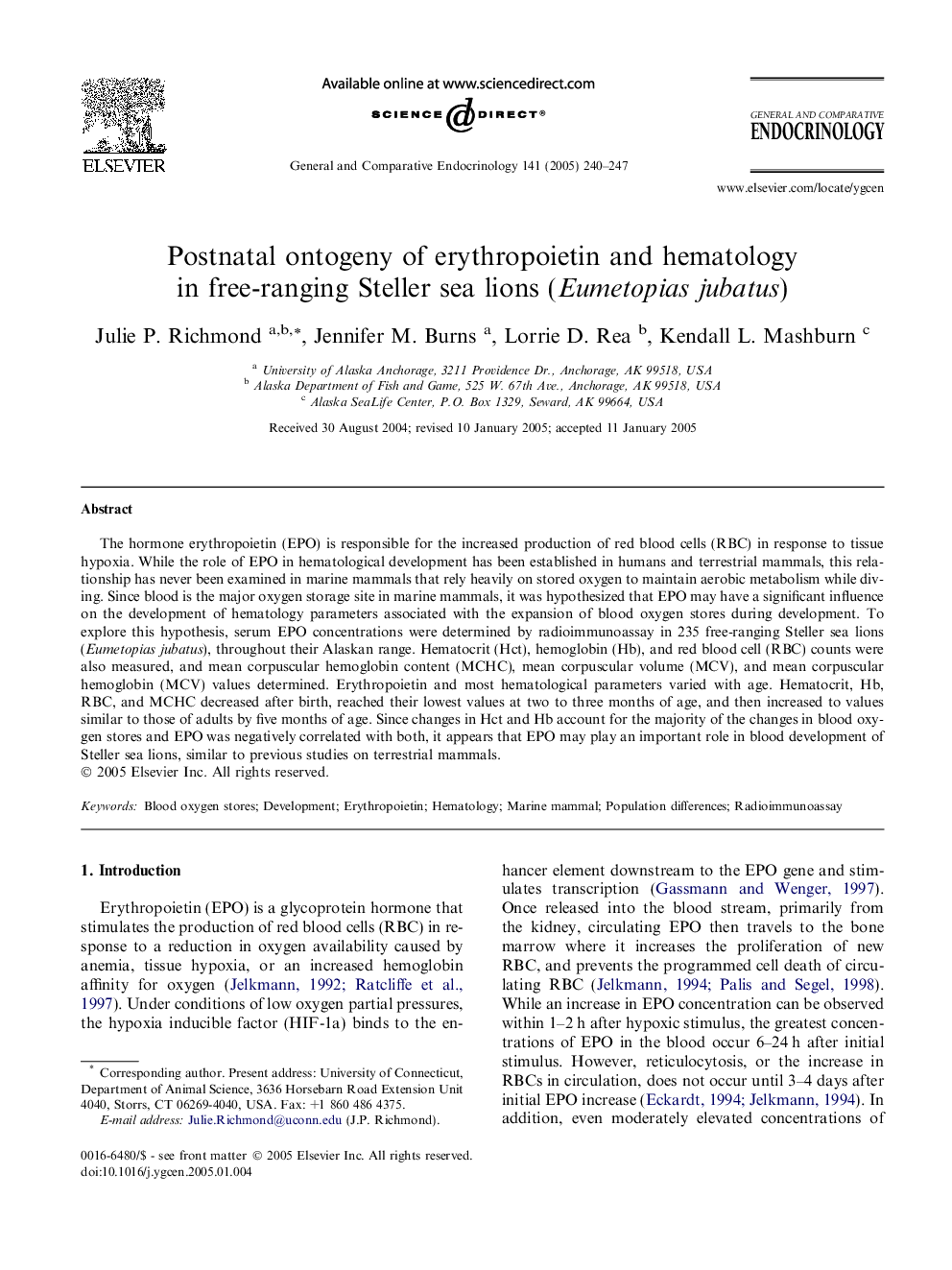| Article ID | Journal | Published Year | Pages | File Type |
|---|---|---|---|---|
| 9113138 | General and Comparative Endocrinology | 2005 | 8 Pages |
Abstract
The hormone erythropoietin (EPO) is responsible for the increased production of red blood cells (RBC) in response to tissue hypoxia. While the role of EPO in hematological development has been established in humans and terrestrial mammals, this relationship has never been examined in marine mammals that rely heavily on stored oxygen to maintain aerobic metabolism while diving. Since blood is the major oxygen storage site in marine mammals, it was hypothesized that EPO may have a significant influence on the development of hematology parameters associated with the expansion of blood oxygen stores during development. To explore this hypothesis, serum EPO concentrations were determined by radioimmunoassay in 235 free-ranging Steller sea lions (Eumetopias jubatus), throughout their Alaskan range. Hematocrit (Hct), hemoglobin (Hb), and red blood cell (RBC) counts were also measured, and mean corpuscular hemoglobin content (MCHC), mean corpuscular volume (MCV), and mean corpuscular hemoglobin (MCV) values determined. Erythropoietin and most hematological parameters varied with age. Hematocrit, Hb, RBC, and MCHC decreased after birth, reached their lowest values at two to three months of age, and then increased to values similar to those of adults by five months of age. Since changes in Hct and Hb account for the majority of the changes in blood oxygen stores and EPO was negatively correlated with both, it appears that EPO may play an important role in blood development of Steller sea lions, similar to previous studies on terrestrial mammals.
Related Topics
Life Sciences
Biochemistry, Genetics and Molecular Biology
Endocrinology
Authors
Julie P. Richmond, Jennifer M. Burns, Lorrie D. Rea, Kendall L. Mashburn,
